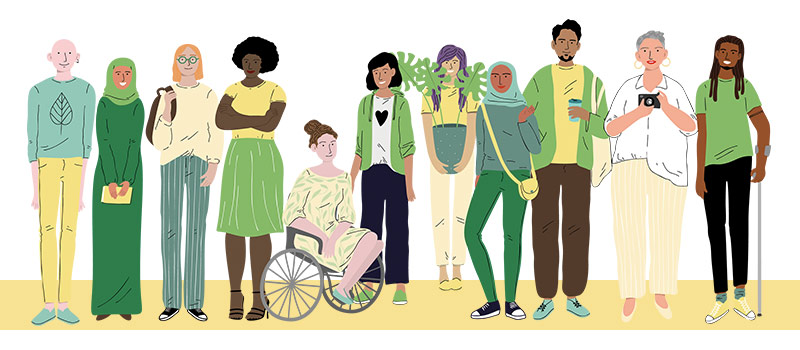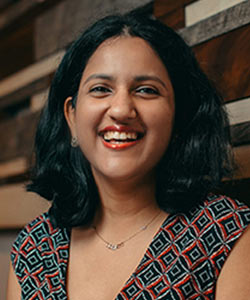By Meenakshi Das

I don’t think people realize how many different types of disabilities there are. People in wheelchairs or wearing hearing aids are noticeable. However, people with invisible disabilities, such as chronic illnesses or depression, are harder to spot. And those of us with a disability find it surprisingly difficult in what purportedly is an “inclusive and diverse” society to find companies that want to hire us.
Although the Americans with Disabilities Act (ADA) was passed in 1990, disabled people are still challenged to find jobs that fit their education and training. But, it’s a two-way street. We don’t know how to ask for what we need because what we need hasn’t been invented, or we are afraid we won’t get hired or could get fired if we do. On the other hand, companies don’t always understand what workplace modifications or assistive technologies may be required. They may fear that such modifications will be expensive (although some workarounds are surprisingly inexpensive) and worry about the extra time required to make them. They may also wonder how we really would “fit in.”
Hiring disabled people might appear to be just “one more thing,” but data show it’s worth the effort on many levels. The most important reason to hire disabled people to make products and provide services is this: Companies want to sell their products and services to the one billion disabled people on this planet.
My experience
I grew up with a severe stutter since the age of five. Fast forward to my first campus job interview in 2015; the recruiter assumed that my stuttering was a sign of low proficiency in English. More important, even though I have a bachelor’s degree and am now working toward a master’s degree in computer science, some people think my disfluency is a reflection of low intelligence. Microsoft disagrees. After obtaining my master’s, I will be working there as a software engineer.
Many teachers silenced me when I was a child and excluded me from activities because I took too long to speak. But I dreamed of studying in the United States and was given a scholarship to study here because someone believed in me. Mentoring meant everything.
Early in my college experience and internships, I suspected I was not the only one whose disability had been mistakenly seen as a sign of subpar intelligence. I decided to become an advocate for people like me, and I started a blog and social media accounts to help disabled individuals in tech. I represented Alabama as a young disability advocate on the 30th anniversary of the Americans with Disabilities Act. (https://rudermanfoundation.org/link20/celebrating-30-years-of-ada/) In 2019, I founded a support group called Working with Disabilities (now, with more than 1000 disabled members) after being a council member for Disability:IN, a leading nonprofit resource for business disability inclusion worldwide.
Calling attention to the issue
Through the years, I realized that there was a lot of misinformation. “Assistive devices” that were crazy expensive ($5000+) could easily be replaced by a $2 or $3 phone app. In my case, I use a Delayed Auditory Feedback phone app while giving presentations. Technology empowers disabled people every day—but not every piece of technology is disabled user-friendly.
As I became more interested in how companies might embrace disability inclusion, I became a spokesperson and advocate for the cause. Forbes magazine mentioned me in a 2019 piece on disability rights, as did CNET and ABC News during the pandemic. “Disabled people are innovative because they already know of solutions to work around their disability to get work done,” I told ABC News. The statistics from an Accenture report titled Getting to Equal 2020: Disability Inclusion stated, “Among the companies in our study, the organizations most focused on disability engagement are growing sales 2.9x faster and profits 4.1x faster than their peers.” Meanwhile, the American Association of People with Disabilities (AAPD) and Disability:IN have both said that U.S. GDP could get a boost of $25 billion if more of people with disabilities join the workforce. Many organizations and people with disabilities seek ways to level up and find ways to access this win-win.
My advice
If companies want to attract and hire disabled employees, they need to go beyond including the phrase “Equal Opportunity Employer” in their outreach, and make every part of their hiring process inclusive, starting with an accessible job portal. Disability disclosure is a personal choice, and one does not need to disclose a disability to request accommodations. Nevertheless, companies must strive to create a sense of trust and inclusion among employees. Senior leadership must work to remove any barriers to, and secure buy-in for, accessibility throughout their organization.
Being an advocate and mentor for disabled people in the workplace has been very satisfying. And I think I’m making a difference. In the end, diversity and inclusion are not just about good business. They are the right thing to do.

Meenakshi Das
Meenakshi “Meena” Das is a master’s student studying computer science at Auburn University. She draws on her life experiences as a woman who stutters and her education in computer science to explain why it’s critical for us to work toward accessibility in academic institutions and the tech field. For more information, please email Meenakshi “Meena” Das here: [email protected].






